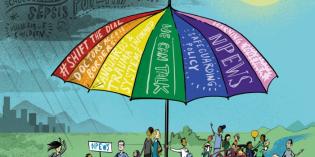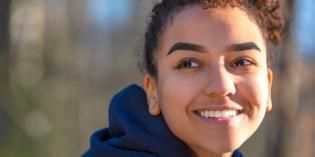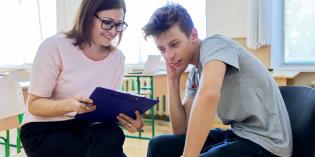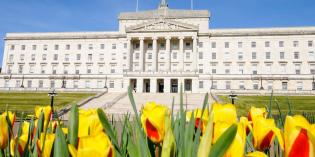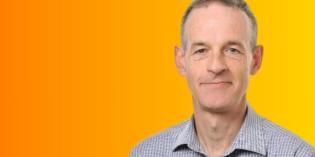
1962 to 2018 (by Eric Coleman)
The beginning of this period in the history of the Society coincided with a time of momentous change in Scottish paediatrics. A progressive increase in knowledge and clinical skills brought specialisation, and new large hospital services for children replaced a fragmentary service based on visiting staff.
New knowledge and clinical skills
From its first flowering there had been a progressive increase in the body of new knowledge and in the clinical skills that until now could be assimilated by every practising paediatrician in the children’s hospital centres then existing. This was no longer possible, and specialisation had entered clinical paediatrics.
The process was to accelerate and bring about a degree of separate identification among paediatrics, - those with expertise within the boundaries, of a single body system, or of an age range, of inborn biochemical disorder, or of an area of clinical management. The equally great change gaining momentum was the establishment and development, in the main centres of population away from the medical schools, of independently staff in-patient and out-patient hospital services for children and with right of access by paediatricians to the newborn. This replaced a fragmentary service based on visiting staff.
These developments and unprecedented advances in therapeutic potential led to substantial increases in consultant paediatrician and senior registrar members of the Society. But for financial constraints the increase might have been even greater.
The membership and complexion of the Society have been profoundly affected by other events.
NHS reform 1974
National Health Service reform in 1974 promised integration of general medical practice, public health services, and the hospitals, with the prospect of a comprehensive system of child health care. Twenty years passed in parts of Scotland before the integration which was to bring together clinical medical officers in child health and hospital paediatricians took place; this logical and long awaited practical alliance between hospital and community has already been of benefit to numerous children and their parents. The Society looks forward to an increasing number of physicians from community child health within its membership. In May 1997 the Summer Meeting of the Society held at Paisley jointly with the Scottish Association of Community Child Health was acclaimed as a popular and successful innovation.
In the last ten years, a number of family doctors, after appropriate instruction, have taken on the developmental surveillance of pre-school children. The Constitution provides for the admission to membership of general medical practitioners with a special paediatric commitment.
Major changes to the training of young paediatricians in the last five years or so, new grading structures and training programmes, specialist registration and continuing medical education for all, have affected the Society. The eligibility for membership of specialist registrars recognises that this appointment signifies entry into consultant training and a commitment to a professional life in paediatrics. The eligibility for membership of established staff grade paediatricians acknowledges these as substantive posts within the establishment.
Contributions by non-paediatricians
From its earliest days the Society has been increasingly aware of the outstanding contributions made continuously to the work of medical paediatrics in Scotland by those who are not medical paediatricians.
Acknowledgement is accorded to those who belong to a list of distinguished associates; paediatric biochemists, haematologists, microbiologists, oncologists, pathologists, radiologists, child psychiatrists, geneticists, non-medical scientists, and others. Paediatric surgeons and other surgical colleagues merit particular mention because of a contribution which goes back to the beginnings of the Society and beyond.
Their eligibility for membership of this Society has never been questioned, but, as mentioned elsewhere, in 1947 the Scottish Surgical Paediatric Society arose as a more appropriate forum. At present, 10 per cent of Ordinary members are specialists from outside paediatric medicine.
An effort is made to admit shoe who wish to take an active part in the scientific proceedings and whose interests in child health disease are wide. Meanwhile, members have a duty to invite specialists from other disciplines to Society meetings.
The growth of specialisation within medical paediatrics led to the expectation of new consultant posts each confined to a single specialty. In the event few such appointments have been made, and most specialties within paediatrics are sustained by consultants with acceptable specialist training, maintaining also a continuing commitment to general paediatrics. Most of those now in training will be aiming to fulfil the criteria laid down for inclusion in the specialty register for paediatrics, with supplementary training appropriate to a special interest within paediatrics.
The effect of this on the Society is that a broad area of common clinical interest is likely to be preserved, and that its meetings will continue to allow specialist to speak intelligibly to specialist.
Mid-20th century
It is difficult now to imagine the state of regional paediatrics in Scotland at the middle of the 20th century, to recall that in most areas it was a meagre service, provided, largely for outpatient work, by a visiting consultant paediatrician from one of the main teaching hospital units, that most in-patients were in adult wards and most sick neonates remained under obstetric care. The new paediatric service, led by single-handed consultants, was set up in county towns and other populous places. From modest beginnings it has advanced remarkably with improved facilities in new general hospitals and maternity units; the consultant staff structure, at least, has become more appropriate to clinical and educational needs. The training of specialist registrars through a rotation of posts , includes district hospitals. The Society has an interest in these centres where many of its members are employed, and provide teaching, training and examining functions, essential to the national paediatric interest.
Through times of momentous change, the Society has retained its function and its distinctive character. Its objectives remain the advancement of knowledge in Child Health and Paediatrics, and the promotion of friendship among paediatricians in Scotland. Through the work of individual members, it is active in the setting and maintenance of high academic and professional standards in paediatrics within the framework of the practice of medicine. In adheres to the policy agreed by members of avoiding political activity, even on issues where opinions are strongly held; members have alternative channels through which to make their views known.
Membership
The Society throughout its history has had a total of only 364 members. Its membership since 1947 has consisted of consultants, senior registrars, others in equivalent grades, with the recent addition of specialist registrars and some staff grade paediatricians, all holding posts in Scotland.
The total number of members has risen from 62 to 209 in 35 years, and of Ordinary Members from 51 to 172. For practical reasons the Presidential term of office has been reduced to one year, which by coincidence comes closer to the Constitution of 1922 which found no place for a President, but merely for a chairman of each meeting.
Meetings
The Minutes, published formerly in the Archives of the Disease in Childhood, now in the European Journal of Pediatrics, testify to the high standard of research communications at winter and summer scientific meetings, and to the wide range of clinical presentations.
Hearty discussion on the interpretation of clinical signs has long been replaced by the measured appraisal of courses of action based on diagnostic precision. Clear and succinct presentation owes much to the excellence of medical illustration, which has been instrumental also in sparing patients from a personal appearance, to embarrassed silence followed by embarrassed applause.
The content of the standard half day meeting has been increasing, but the balance between scientific communications and clinical presentations has scarcely changed. Most meetings are held in Aberdeen, Dundee, Edinburgh and Glasgow, the winter meetings being alternately in Edinburgh and Glasgow. The Society has met at Inverness on several occasions, at Ayr, Bellshill, Irvine, Kirkcaldy, Paisley, St. Andrews, Stirling, and, in both Golden and Diamond Jubilee years, with the British Paediatric Association, at Aviemore.
The triennial Jubilee Lecture, by a person of professional distinction who is not an Ordinary member, and which may be published by the Society, was established in 1972, with additional Lectures in the Diamond Jubilee and the 75th anniversary years. Its funding until 1990 was by Glaxo Laboratories, taken on in 1993 by Wyeth Nutrition. The Winthrop Essay Prize, donated in Diamond Jubilee by Winthrop Laboratories was awarded on two occasions.
The Scottish Paediatric Society continues to provide a unique and friendly forum for the exchange of information and ideas about the health and welfare of children. With undiminished vigour it retains the ability to respond and adapt appropriately to the changing needs of changing times.
1922-1962 (by Stanley Graham)
The following is reprinted from the 1962 Booklet. Stanley Graham was a guest at the First meeting of the Edinburgh and Glasgow Paediatric Club in July 1922.
The Scottish Paediatric Society arose logically out of the Edinburgh and Glasgow Paediatric Club, which was founded in July, 1922, by ten medical men in Glasgow and Edinburgh, whose main interest was in diseases of children.
The Foreword, contributed by the two surviving members of the original ten, explains the objects of the Club and the nature of the meetings. These were held twice yearly, alternately in Edinburgh and Glasgow. Minutes were kept by the Secretary, but there were no formal speeches, and the chairman, usually one of the hosts, was appointed at the beginning of the meeting, his only duty being to announce the next speaker. Cases of unusual interest were shown before tea, followed by two or three short papers on current research given by members or guests. Rickets and marasmus were the major problems of the day and, at the early meetings, one or other was sure to be on the agenda.
Discussion was often vigorous, and for the guests and the junior staff (who were allowed to attend) it was a rewarding experience to listen to the quiet hesitant voice of John Thomson in argument with the more aggressive members of the Club. Reports of laboratory tests and biochemical confirmation of the clinical diagnosis were conspicuously absent. In the early twenties most of the tests used today were not yet known; even the erythrocyte sedimentation rate was not in clinical use and micro-chemical methods were in their infancy.
For the first few years, the members and their guests dined in the homes of their hosts – John Thomson, Charles McNeil or Lewis Thatcher, in Edinburgh, and Leonard Findlay, Geoffrey Fleming or James Greenless, in Glasgow. Soon the increasing number of guests and the social revolution, which had begun at the end of the First World War, made this impossible and, beginning with the summer meeting in 1927, members and guests dined at an hotel, as in the custom of most societies today. Meetings were held regularly, except for a few occasions during the Second World War when, for obvious reasons, they were either curtailed or omitted altogether.
As the years passed, paediatrics became established as a special branch of medicine worthy of a department of its own in the medical schools of the country. In 1924, a chair of Medical Paediatrics (later changed to Child Health) was founded in Glasgow, with Leonard Findlay as the first professor. Charles McNeil was appointed as the first holder of the newly created chair of Child Life and Health at Edinburgh University in 1931. The other two Scottish universities soon followed, John Craig being appointed to the chair in Aberdeen in 1947 and John Henderson at St. Andrew’s four years later.
In 1942, at the summer meeting, the future activities of the Club were discussed, especially methods of securing wider recognition of the importance of paediatrics, not only in academic medicine, but in general practice as well. It was suggested that they should be extended to include all aspects of the health of children, and closer co-operation with the Child Welfare Departments of the local authorities was envisaged. A memorandum was drawn up for the Chief Medical Office at the Department of Health for Scotland, who was to be consulted about its distribution.
According to the minutes of the meetings at that time, nothing further was done. In retrospect, submission of such a memorandum would probably have been ill-timed, for the dark days of war were still upon us and post-war planning had yet to come. Special mention is made of this, however, because it is the only excursion, into the field of administrative paediatrics initiated by a Society whose activities have always been confined to clinical paediatrics.
In 1945, at the end of the Second World War, there were twenty-three members, including three from Newcastle – James Spence and Glen Davison, who had been invited to join in 1924 and later, A.G. Ogilvie. After the war, these three members helped to form a local society of their own. Of the original ten members of the Club, only two were still engaged in the practice and teaching of paediatrics – Geoffrey Fleming and Charles McNeil. It seemed obvious that in the post-war years, as the staff of the hospitals increased, so also would the potential membership, and in the four university centres were was an increasing number of men who were devoting their time exclusively to paediatrics, either as teachers or in research. The meetings were well attended and often there were almost as many guests as members. Some change seemed imminent.
Although life in general at that time was far removed from normal, and severe restrictions were still in force, the members of the Club thought it wise to extend the membership and at the same time establish the Club as a society with a constitution and office-bearers. Accordingly at the summer meeting on 7th June, 1946, it was suggested that the name be changed to "The Scottish Paediatric Society", and that a constitution be drawn up for discussion at the winter meeting. This was done. On 29th November, 1946, the new constitution and the change of name were approved. The membership was limited to thirty. Geoffrey Fleming was elected as the first president, and George Montgomery (now Professor of Pathology at the University of Edinburgh) the secretary and treasurer.
The first meeting of the new Society (the 41st of the Edinburgh and Glasgow Paediatric Club) was held in Edinburgh on the 27th June, 1947. It is sad to have to record that one of the first duties of the new president was to announce the deaths of Leonard Findlay, a founder member of the club, and Noah Morris, a member since 1927, both of whom had done so much to further the interests of paediatrics between the wars. At this meeting it was also decided to admit paediatric surgeons to the Society, but it was later learned that the surgeons were forming a club of their own on the lines of the old medical club.
The meetings of the Scottish Paediatric Society still follow the same pattern as those of the Club and are now held in the four university cities of Edinburgh, Glasgow, Aberdeen and Dundee. On two occasions special meetings have been held in Inverness by the courtesy of Patrick MacArthur, who is paediatrician to the Northern Regional Hospital Board. The popularity of the Society is indicated by the fact that, in 1952, the membership was increased to 40, in 1955 to 50, and in 1962 to 60. Membership is still eagerly sought, and the members profit not only by discussion of clinical problems, but also by the friendly relations with their colleagues from other centres.

